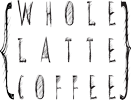The elixir of the Gods. The base of most specialty coffee recipes today. Meet the Espresso.
The first Espresso
Coffee was very popular in Europe from the late 1800’s onwards. The only problem with brewing coffee is that it takes time. In search for faster preparation methods, 1884 Angelo Moriondo registered a patent in Turin (Italy) for a “New steam machinery for the economic and instantaneous confection of coffee beverage”. The machine described used a large boiler that created 1.5 bars of pressure to brew coffee in bulk for the Turin General Exposition.
In 1901 Luigi Bezzera filed a number of patents that built upon Moriondo’s idea. It was Bezzera who came up with the portafilter and multiple groupheads. The one downside of his machine was that it was heated over an open fire, which meant brewing pressure and temperature were quite inconsistent. A few years later Desiderio Pavoni bought a number of his patents and made improvements of his own. Pavoni added the pressure release valve that made working with the machine a much less messy affair. Later he also added an outlet to access the steampressure inside the boiler which then turned into the steamwand we all know today. It was however still a steam powered machine and therefore couldn’t brew coffee with more than 1.5 – 2 bars of pressure without burning the coffee itself.
In 1938 Giovanni Achille Gaggia filed a patent for a “steamfree coffee machine”. It used the boilerpressure to force the water into a separate chamber and a then a lever-operated piston forced the water through the coffee puck. With that piston system it was finally possible to brew coffee in 15 seconds with 8 to 10 bars of pressure, without burning the coffee. The term “pulling a shot of espresso” in fact refers to pulling the springloaded levers on these machines.
Over the years there have been many companies that created their own versions of these machines. There was however one man that single handedly evolved them again. That man was Ernesto Valente who in 1961 invented the Faema E61. The E61 didn’t rely on the barista to pull endless shots of espresso. Instead, a electric water pump was fitted that would produce 9 bars of pressure.
Misconceptions
The word Espresso in Italian relates to the pressure used to brew. It also translates to “fast”, “express” and “made to order”. Sometimes people write or say Expresso. More often than not you’ll see aficionados blurting out that the correct term is Espresso, but they are wrong. In fact, Expresso is French and translates to almost all of the things as the Italian Espresso.
Espresso blends or Espresso beans are another misconception. There is no such thing, it’s a marketing term. You can use just about every roasted coffee bean for every type of Brewing Method, including Espresso. However, a good roaster will specify which blends they think are best for which Brewing Method. Generally speaking, I use darker roasted beans for Espresso and Espresso based drinks. Darker refers to the color of the bean after roasting, where longer roasting makes darker beans. Why? Because a darker bean tends to create more crema and a stronger espresso than lighter blends. However, my prefered roaster does have a few light blends that I love for Espresso, too. They have a lighter, brighter taste at the cost of a little less crema. This is all just personal preference though, I urge you to buy a few different blends to see which you like best.
Espresso defined
There are a number of requirements a certain brew must meet before it can be qualified as an Espresso. The most obvious one is the pressure involved in the process, approximately 9 Bar (~130 PSI). A second requirement is the amount of coffee for a single shot which is set at 7 grams, plus or minus 1 gram. Even more so than with the previous Brewing Methods, temperature control is very important. The temperature of the brewing water should be ~88 Celsius (~190 Fahrenheit), the temperature of the brewed coffee in the cup should be around 67 Celsius (~152 Fahrenheit). The last requirements are the extraction time and yield. Pulling a single shot should take about 25 seconds, plus or minus 5 seconds and yield about 25 ml of coffee (plus or minus 2.5 ml). For a double shot everything but the extraction time and temperatures, doubles.
The requirements however aren’t strict rules, they are guidelines but should be your starting point and you shouldn’t stray too far. For some beans you’ll want to use 9 grams per shot, or 32 seconds of total brewing time. The only thing that matters is that you create an enjoyable espresso, adhering to the “rules” strictly and coming up with sub-par coffee is just a waste of coffee.
The shoppinglist

The La Pavoni on the right is a lever machine, we will use the E61 machine on the left
- Espressomachine
- Freshly roasted coffee beans
- Burr grinder
- Tamper
- Espressocup(s)
- Timer
- Scale
For this method I’ll be using a semi-automatic espressomachine, that means I still have to fill the portafilter basket and turn on the pump manually. However, it does have a few automated functions like heating the boiler to a set temperature and filling the boiler. For most other Brewing Methods, a decent handgrinder will most of the time suffice. For espresso however, grind quality has a big impact on how the espresso extracts. To ensure the coffee particles are ground to a consistent size, I’m using a good quality flat burr grinder.
The tamper you use has to be a perfect fit for your filter basket(s) as well. An oversize tamper just won’t fit, but an undersized tamper will be unable to compress all the grounds. Some people use either end of the tamper to knock against the side of the portafilter but that possible fractures the coffee puck, leading to channelling and an uneven extraction. Plus over time it damages your portafilter and tamper.
Step by step
- Turn on the espressomachine and let it warm up with the portafilter in the grouphead

A cold portafilter will chill your espresso before it even makes it to the cup, pre-heat!
- Pre-heat the cup

An espresso is just 25 ml in volume, making pre-heating a necessity
- Grind the beans on a very fine setting

8.50 grams per shot works well for this particular blend
- Remove the portafilter and clean the filter basket

Always keep a clean, dry rag nearby
- Fill the portafilter with the ground coffee and level the grounds

Giving the portafilter a few light taps to even out the grounds makes for a more even puck
- Use the tamper to compress the grounds

For an even extraction, keep the tamper level and give it a little twist at the end
- Flush the grouphead

Flush between cycles to remove any lingering grounds
- Empty the cup and put it on the scale under the grouphead and tare

I place a tray under the cup to catch any spills from getting into the scale
- Lock the portafilter into the grouphead and set a timer for 25 seconds

To prevent burning, lock the portafilter in and start the pump as soon as possible.
- Turn on the pump and start the timer

Start timing from the second you turn the pump on
- When the scale reads 30 grams or the timer expires, shut off the pump

Aim for 30 grams for a single shot, and double that for a double shot
- Remove the cup and scale and then enjoy!

Serve it quickly as it will still cool down very fast
In this recipe I’m brewing a single cup of Espresso. With my current blend of beans I’ve found that using a 8.5 grams per shot gives me the best results. However, dialing the perfect shot of Espresso should always begin with the basic parameters. Start with 7 grams of coffee and aim for 25 ml (~30 grams) in 25 seconds. If you get to 25 ml / ~30 grams before the 25 seconds mark, try adjusting the grind a little finer. Similarly you can adjust the grind coarser if you need more than 25 seconds to get to 25 ml / ~30 grams of espresso.
When you’re pulling a 25 ml shot of Espresso in 25 seconds with ~7 grams of coffee, then you can start to adjust those parameters to taste. Watery? Either grind a little finer or use a little more coffee. If the Espresso is too bitter, adjust the grind a little coarser.
If you’re in the habit of making more than one espresso at a time, it might be more worthwhile to make doppio’s (double shots) instead. You will have to use approximately twice as much coffee and adjust the coarseness of your grind. In 25 seconds (plus or minus 5 seconds) the total yield should then be 2 espresso’s at 25ml (plus or minus 2.5 ml) each, in either 1 or 2 cups.
The result
Espresso is my personal favorite Brewing Method, its taste is different from any other method. Once you’ve had your fill of Espresso you can switch to Espresso based drinks like cappuccino, latte, macchiato, or affogato. I’ll be finishing my umpteenth espresso in a few minutes while deciding on a new subject for my next post. If you have suggestions, I’d love to read about them in the comments or on Twitter or Facebook.
There are 7 more articles in the Brewing Methods series: The French Press, The Moka Pot, The Vacuum Coffee Maker, Turkish Coffee, The AeroPress, Hario V60 and Cold Brew Coffee.














Recent Comments